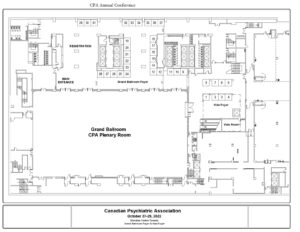C10 – Integrating Cognitive-Behavioural Therapy into Your Psychiatry Practice: Brief Interventions for Habit Disorders, Illness Anxiety, and Trauma
Saturday, Oct. 21
14:30 – 16:30 (2 hrs)
Meeting Room: Junior Ballroom AB (3rd floor – North Tower)
Jesse Renaud*, PhD; Jesse Renaud, PhD; Jean-Philippe Gagne, PhD; Gail Myhr, MD,CM, MSc
CanMEDS Roles:
- Scholar
- Communicator
- Medical Expert
At the end of this session, participants will be able to: 1) Use stimulus control and habit reversal to treat habit disorders effectively; 2) Know the “dos and don’ts” of dealing with illness anxiety; and 3) Apply psychological first aid and teach emotion-regulation strategies to help patients tolerate distress associated with traumatic experiences.
Cognitive-behavioural therapy (CBT) is the first-line psychological intervention for most psychiatric disorders; however, long waitlists and systemic barriers can lead to delays or inability to accessing care. For many patients, receiving low-intensity CBT interventions during routine appointments can be a fast and effective way of gaining access to care. The effective integration of CBT theory and interventions in routine practice can also prevent reliance on as-needed medications and prolonged medical leaves that may inadvertently contribute to the persistence of some disorders.
This course is aimed at practitioners who wish to improve patient outcomes by integrating evidence-based CBT interventions into their practice. We will review guidelines for the effective implementation of brief interventions for habit disorders, illness anxiety, and trauma. Participants will learn foundational behavioural interventions (e.g., habit reversal and stimulus control), the importance of recognizing avoidance and other safety behaviours that contribute to the maintenance of illness anxiety, psychological first aid, and skills to help patients regulate emotional arousal and distress. We will provide recommendations for patient resources, including popular apps and self-help readings, to help engage patients and maximize practitioner time. Demonstrations and interactive exercises will allow participants to increase their skill level using key interventions.
References:
- Sudak DM, Majeed MH, Youngman B. Behavioral activation: a strategy to enhance treatment response. J Psychiatr Pract 2014;20(4):269–75.
- Bennett-Levy J, Richards DA, Farrand P, et al., editors. Low-intensity CBT interventions: a revolution in mental health care. In: Bennett-Levy J, Richards DA, Farrand P, et al., editors. Oxford guide to low-intensity CBT interventions. New York (NY): Oxford University Press; 2010. p 3–18.

